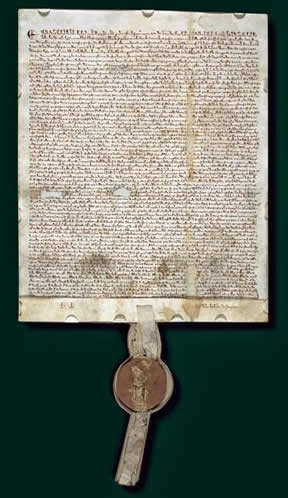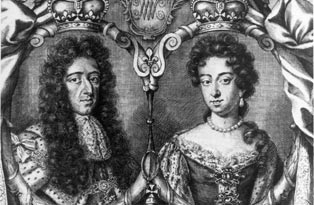|
Second Amendment in Historical Context - Part 1
For thousands of years, governments have attempted to balance the need for military strength for national defense against the accumulation of arms in the general population which can be used as an internal defense against the tyranny of a ruling class. Take ancient Greece as an example. Sparta had a full time professional militia, or standing army, while Athens had no standing army and all men of a certain age were required to undergo military training. In ancient Rome , which had a vast standing army, the wealthy were allowed to bear arms, the plebeians (commoners) were not. We'll continue in Europe, prior to the founding of America. Assize of Arms, signed by King Henry II of England, 1181 - This allowed all free men of England to own a weapon in order for the king to have an ever ready army. However, recognizing that an armed citizenry could create serious resistance to an oppressive king, the Assize of Arms also allowed the king to restrict the types and numbers of weapons a man could own. Magna Carta, signed by King John of England, 1215  -
-
King John signed the Magna Carta due, at least in part, to the military strength of the wealthy land barons of the day (i.e., privately owned guns and militia with the aid of Prince Louis of Dauphin and King Alexander of Scots). The Magna Carta was a major development in self government - the barons selected 25 of their own to represent them - as well as constitutional and common law. It marked the beginning of guaranteed rights and liberties for all people. In this case, the Magna Carta guaranteed rights to the land barons, including fines in proportion to the offense, no self-incrimination and the right to a jury trial. Over time, at least 63 of the provisions of the Magna Carta have spread liberty and freedom to all classes of people, rich and poor, through the formation of similar governments in other countries, including the United States of America. |
||
|
Petition of Right, signed by King Charles I of England, 1628
- After the signing the Magna Carta, the balance of military power shifted over time back the government of England. In the early 1600’s King Charles I would house his soldier in private homes and imprison without trial. (King George III behaved similarly toward the American colonies in the 1700’s.) The Petition of Right was drafted by Sir Edward Coke, a member of the English Parliament, to reaffirm the liberties and rights of the Magna Carta.
The Game Act, signed by King Charles II, 1671
- This allowed wealthy land owners to own guns while peasants could not. Passed with the support of the wealthy as an effort to reserve game animals and hunting for their leisure, the Game Act also allowed the king to seize the weapons of his enemies and control gun sales by requiring gunsmiths had to report their activities and a license for all imported guns.
Second Amendment
Lawyers perpetually argue about the selection of the words and how they may apply to individuals (“the right of the people”) or only to state militias (“necessary to the security of a free State”), etc. in order to gain ground in thier particular legal situation, and the Supreme Court is no different. However, in our view, those who dither about the meaning of words and attack the Second Amendment are turning a deaf ear to the clear and tangible lessons of history which speak volumes to those willing to listen.
|
||

|
||

Custom Search
|
||
 Replaced King James II as the rulers of England in 1689. William and Mary consented to the English Bill of Rights, which included, among many provisions, gun control that allowed only Protestants to bear arms for their self defense, while Catholics could not. Not surprisingly, William and Mary were Protestant while King James II, the prior ruler and Mary’s father, was Catholic and had only allowed Catholics to bear arms.
Replaced King James II as the rulers of England in 1689. William and Mary consented to the English Bill of Rights, which included, among many provisions, gun control that allowed only Protestants to bear arms for their self defense, while Catholics could not. Not surprisingly, William and Mary were Protestant while King James II, the prior ruler and Mary’s father, was Catholic and had only allowed Catholics to bear arms.
